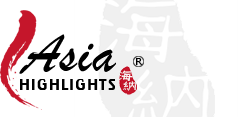Everyone loves sushi, and you might be particularly excited to finally have an opportunity to eat it in Japan! Just remember that in Japan sushi dining etiquette is taken seriously, so it will be good to review these guidelines before booking a table at your favorite sushi venue.
In this guide, we shall discuss some general guidelines for Japanese dining etiquette, then more specifically how to eat sushi. Lastly, we will give you some interesting facts about sushi you can use to impress your friends when traveling in Japan.
Highlights
- Japanese dining etiquette can be strict, some general rules will help you greatly.
- Learn how to use chopsticks properly and increase your confidence.
- Try not to distract the chef while he is preparing your sushi; he needs to concentrate.
- To be like a pro, try eating sushi rolls using your fingers.
- Use soy sauce, wasabi, and ginger correctly; never use them to smother the natural flavor of the fish.
General Rules of Japanese Dining Etiquette
First things first: when you are seated in a restaurant, you will be provided with a wet towel to clean your hands (and only your hands). Afterward, fold it and put it aside. At the start of the meal, everyone says "Itadaki-masu", meaning "I humbly receive".
Pour a small amount of soy sauce into the small bowl provided and dip your food in it. Do not waste soy sauce: it is one of the principal ingredients of Japanese cuisine and regarded as precious.
Offer a formal thank-you after the meal is over, by saying "Gochisosama". If you used disposable chopsticks, place them back inside their pack and close the end. If they are not disposable, place them sideways on your plate. If you place them beside your plate, it shows that you are not done eating. Sometimes chopstick holders are provided and if so,they should be placed there.
When paying, place your money on the small tray provided. If there is no tray, use both hands to give and receive money. Tipping is considered rude, so avoid it.
Discover real reviews of Highlights Travel Family's best-rated service across trusted platforms.

 
|
Winter Wonderland in Japan
I have used Monica MANY times to arrange my international trips. She always exceeds my expectations with great suggestions, incredible hotels and buffets, fantastic drivers, and great photographic experiences (as per my request). This latest trip was an unforgettable Winter Wonderland experience in Japan. I have nothing but positive experiences and things to say about Asia Highlights. Thank you so much More
Trent, Feb 2025
|
Planning a Trip to Japan
We selected Asia Highlights, largely for the support, insights, and responsiveness of our agent, Alisa. She was able to pull together an amazing criteria that met all of our requirements (which changed several times throughout the process) More
Stephen Gold, Feb 2025
|
China- Japan December 2024
Our travel guide in Kyoto was Slash, he was very well informed, he gave tips how to avail to tourist discounts and the process involved and guided us on good dining and shopping options. Our travel guide for a day trip to Mount Fuji was Alan! Alan definitely went above and beyond in being our guide, he was very personable, jovial and was a big hit with our whole family. More
Pallavi, Feb 2025
|
How to Use Chopsticks
If you want to respect Japanese dining etiquette, you first must learn how to use chopsticks.
Don't forget that chopsticks are eating utensils and should be treated as such. Don't play with them or rub them together. If there are no communal chopsticks to pick up from a family-style dish, use the ends of your chopsticks that don't go into your mouth to pick up food and place it in your bowl.
Simple rules for using chopsticks
- Do not use them to point at anyone.
- Do not lick soy sauce off your chopsticks.
- Do not rub your chopsticks together.
- Do not lift food by stabbing it with your chopsticks.
- Do not stick chopsticks vertically into your rice bowl.
- Never ever pass food with your chopsticks.
How to Eat Sushi
When eating in a serious sushi restaurant, the chef will have his distribution plan and serve the sushi accordingly. (If you particularly like something or have an allergy, it's okay to tell the chef.)
Typically, a sushi meal usually includes three types of sushi: nigiri (raw fish on rice), sushi rolls, and sashimi (plain raw fish). Use chopsticks to eat sashimi and nigiri. Use your fingers to eat sushi rolls. However, when picking up a sushi roll, only touch the seaweed. (You can use your chopsticks to pick up sushi rolls if you like.)
When eating nigiri, dip only the fish in the soy sauce – not the rice. This should be done by turning the nigiri on its side, picking up the piece and turning it over to dip only the fish in soy sauce. .
When made properly, the rice for sushi is tasty and has the right texture. It is considered the primary ingredient in sushi. If the sushi has a spicy or sweet topping, you should not dip it into soy sauce.
So, pick up the piece of nigiri and rotate it, dip it into the soy sauce and then put it into your mouth, placing the fish on your tongue. Every sushi specialist will tell you that this way nigiri tastes much better. Every piece of sushi should be eaten in one bite – don't bite it in half or it may fall apart.
Interacting with the chef
Every serious sushi experience starts with you sitting at the counter. The chef will be in front of you, and you should talk to him as little as possible so as not to distract him, but you should start by asking him what he recommends. Good chefs personally choose the fish at the market, so their opinion is valuable. /p>
After dinner begins, do not distract the chef with questions or small talk: he needs to concentrate on preparing the sushi – and he is handling an extremely sharp knife. When leaving the venue, offer the chef a deep and respectful bow. And never offer him a tip as Japan does not have a tipping culture like the West.
How to use ginger and wasabi
In the West, it is common to mix wasabi in soy sauce to create a thicker soy sauce for dipping the sushi. This isn't how it is done in Japan. If you want to eat sushi properly, avoid mixing in the wasabi.
In many restaurants, the chef will already add a small amount of wasabi to every piece so that the proper amount of wasabi is used with different kinds of sushi.
Even if many Japanese restaurants provide additional wasabi, using too much of it in front of the chef can be somewhat insulting. The chef spends time handpicking every single ingredient to try to give you the best combination of flavors.
If adding your own wasabi, place it onto the fish using your chopsticks. Once again, do not mix it with the soy sauce. When done adding wasabi, never lick the wasabi from your chopsticks as it is considered rude.
Some people pair ginger with bites of sushi, but ginger is intended to be a palette cleanser between bites. It is not intended to be eaten in the same bite as sushi, but between bites when changing from one kind of sushi to the next.
5 Things You Probably Didn't Know About Sushi
Now you have seen the rules for eating sushi like a pro, let's look at five interesting facts about sushi to share with your traveling partners!
1. Sushi does not originate in Japan
It is assumed the Japanese invented sushi, but this is not the case – at least not completely. The inspiration for sushi came from a dish eaten in Southeast Asia: narezushi, fermented fish wrapped in sour rice. However, sushi as we know it was invented in Japan during the mid-1800s.
2. The wasabi you are eating is probably fake
Real wasabi is made with wasabia japonica, a plant found in Japan. But wasabi is often substituted with horseradish. Its powerful burn is perfect for killing potential microbes that could be present in raw seafood. Real wasabi is expensive, and some sushi restaurants make you pay separately for it.
3. Puffer fish is the most dangerous sashimi
Pufferfish ("fugu" in Japanese) contain lethal amounts of poison in their glands. Of course, the chef's job includes removing all toxins from the fish, but inadvertently scraping toxins onto the fish with a knife may be enough to release enough poison to kill someone.
This is why chefs must undergo rigorous training if they want to be licensed to prepare fugu sashimi.
Fugu is so dangerous that, no matter what, the emperor of Japan is never allowed to eat it.
4. Maki rolls are meant to be an art form
In Japan, maki rolls are serious business. Every ingredient is chosen according to its taste, texture, and color. Every element has to integrate perfectly with the others, and the result can be compared to a small and beautiful painting.
Chefs slice their rolls so that the beautifully-crafted layers are on display for customers to eat with their eyes before they eat with their mouths.
5. To thank the chef, you can offer a shot of sake
Sushi chefs work hard to provide customers with great sushi eating experiences. A simple way to thank them is to offer them a shot of sake. Of course, if the chef accepts, you should take a shot as well. .
You might like to read
Enjoy Sushi with Asia Highlights
We know that your mouth is watering by now and that you cannot wait to savor some amazing, authentic Japanese sushi. So don't delay any longer. Start planning your next trip to Japan! Our knowledgeable travel advisors will take care of everything and plan the perfect, hassle-free, dream vacation for you and your family!
Get Inspired with Some Popular Itineraries
At Asia Highlights, we create your kind of journey — your dates, your destinations, at your pace. You can have any trip tailor made for your travel.



